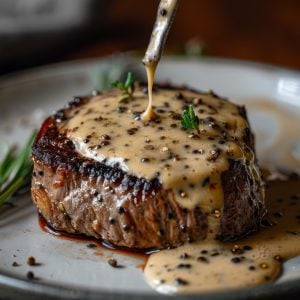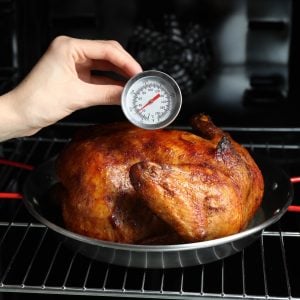How to Make a Great Stew Recipe
Stewing is one of the most comforting and versatile cooking methods, perfect for creating tender, flavorful dishes.
In this post, I’ll show you how easy it is to transform a variety of ingredients into hearty, delicious meals. Whether working with meat, poultry, seafood, or vegetables, stewing can bring out the best in every ingredient, making it melt-in-your-mouth tender while blending flavors beautifully.
The key to a perfect stew lies in slow, gentle cooking. Simmering your ingredients over low heat allows the flavors to develop and deepen without the risk of overcooking.
The process is simple: brown your ingredients, add liquid, and let them slowly cook until tender. Along the way, you can build layers of flavor with herbs, spices, and aromatics, creating a complex dish with minimal effort.
In this article, I’ll walk you through the basics of stewing and give you tips on how to stew a wide range of ingredients. You’ll learn how to adjust cooking times and liquids for different types of food, and how to create the perfect stew every time. Ready to stew anything? Let’s dive in and explore this timeless cooking technique.
Stews v. Braises
Stewing and braising are both slow-cooking methods that use moist heat to tenderize food, but they differ in technique and the types of dishes they produce.
In stewing, fully submerge the ingredients in liquid, such as broth or water, and simmer them over low heat. This method works well for smaller, bite-sized pieces of meat, poultry, or vegetables. The long cooking time melts the flavors, resulting in a rich, flavorful dish with a thick, hearty sauce.
Braising, however, involves partially submerging more significant cuts of meat or whole vegetables in a small amount of liquid. You first brown the ingredients in a hot pan to develop flavor, then add a small amount of liquid and cover the pan. The food cooks slowly in the covered pan, with just enough liquid to create steam and maintain moisture. Braising is perfect for tougher cuts of meat, like chuck roast or short ribs, which become tender and juicy as they cook.
While both methods create tender, flavorful dishes, stewing results in a more soupy consistency, while braising leaves a more concentrated sauce.
A Little Stew History
Stewing has ancient roots, dating back thousands of years. Early humans discovered that slow-cooking food over low heat made it tender and flavorful. In ancient cultures, people would simmer meat, vegetables, and grains in a pot over an open fire. This method was practical, allowing them to cook tougher cuts of meat and create meals that could feed many.
Throughout history, stewing has become a staple in many cuisines worldwide. In medieval Europe, stews were common in households and inns. They were made with whatever ingredients were available, making stews a versatile and cost-effective option.
As time went on, stews evolved. Different cultures added twists using spices, herbs, and local ingredients. In France, for example, stews like boeuf bourguignon became iconic, showcasing the art of slow-cooking with wine and aromatics.
Stewing remained a popular cooking method because it was simple and produced rich, hearty meals. Even today, stews are loved for their ability to bring out deep flavors and transform inexpensive ingredients into comforting dishes.
Ingredients
The best ingredients for stewing are those that benefit from slow cooking. Tough cuts of meat work well, as the long cooking time breaks down the fibers and makes them tender. Beef chuck, pork shoulder, and lamb shanks are excellent choices. Poultry, like chicken thighs or legs, also stews, becoming juicy and flavorful.
Root vegetables, such as carrots, potatoes, parsnips, and turnips, hold up well in stews. They absorb the flavors of the broth and soften nicely. Onions, garlic, and leeks add depth and aroma to the dish.
Beans and legumes, like lentils, chickpeas, and kidney beans, are great for stews as they cook down into a creamy, hearty texture.
Herbs like thyme, rosemary, and bay leaves infuse the stew with fragrance and complexity. Fresh or canned tomatoes can also add richness and acidity to balance the flavors.
In short, choose hearty meats, sturdy vegetables, and flavorful seasonings. With long, slow cooking, these ingredients will transform into a comforting, flavorful stew.

How to Stew
The general method of preparing a stew is:
- Dredge chunks of meat in seasoned flour (this will help thicken the stew later.
- Sear meat on all sides in a bit of oil in a Dutch Oven (or whatever pan you’ll be stewing) until deep brown. Set the meat aside.
- In the same pan, cook chopped mirepoix (onions, carrots and celery) or trinity (onions, celery and green pepper) until golden brown. Add any dried herbs and spices at this point.
- Deglaze with liquid – beef stock, chicken stock, water, wine, beer – whatever the recipe, or your taste, calls for.
- Add the meat back to the pan. Pour enough liquid to cover the meat, and bring it to a simmer.
- Cover tightly, and finish stewing in the oven at a low temperature – around 300 degrees F, is a good target. This could take anywhere from just 10 minutes for some vegetables and fish to upwards of two hours for tougher cuts of beef or mutton. Again, check your recipe.
- Remove the pot from the oven, and skim off any unwanted fat. If the liquid is thinner than you want, you may thicken it with some cornstarch dissolved in cold liquid or some buerre mani – this is just a fancy French term for equal parts of butter and flour kneaded together to make a dough. Whichever method you use, bring the cooking liquid to a boil so the starch can thicken the cooking liquid.
Important:
The vegetables in a long-cooking stew lose their texture by the end. You can either discard them and add fresh vegetables during the last 30 minutes of cooking or blend some of the softened vegetables into the sauce with a stick blender to help thicken it.
You can stew in a Dutch Oven or a crock pot. Don’t dismiss the crock pot—it’s perfect for slow, moist cooking, and it excels at stewing.
I mentioned browning the meat and vegetables in the pot you’ll be stewing in. If you’re using a crock pot, you can’t do this directly in the pot. Instead, brown everything in a sauté pan, deglaze with the liquid from the recipe, and scrape up the browned bits. This adds rich flavor. Then, pour the vegetables and deglazing liquid into the crock pot.
If you don’t have a crock pot, make sure your Dutch oven is oven-safe. If it has plastic handles, it’s best to stew on the stovetop over low heat. However, it’s worth investing in a sturdy, all-metal Dutch oven for oven use.
To develop deep flavors in a stew, sear the meat and vegetables first. Stewing with moist heat doesn’t get hot enough for browning, which adds complexity and richness. Some “blond” stews, like fricassee, don’t require browning. However, they’ll have a milder flavor than those that start with browning.

Classic Beef Stew
There are infinite recipes for beef stew. If you just did a Google search, it would come back with over half a million hits!
This is one that I like to make. I use some red wine for depth of flavor and homemade chicken or turkey stock. Sometimes making a beef stew with wine and beef stock makes it almost too rich. Using a lighter stock is a good compromise.
Beef Stew Recipe
Ingredients
- 2 pounds beef suitable for stewing - chuck is nice for this - cut up into 2 inch cubes
- 1 cup all purpose flour well seasoned with salt and pepper.
- 2 tablespoons canola oil or other neutral oil
- 1 medium onion chopped
- 4 oz fresh mushrooms sliced, try crimini or button
- 2 medium carrots chopped
- 2 ribs celery chopped Salt and pepper, to taste
- 1 tablespoon tomato paste
- ½ teaspoon red pepper flake more or less, to taste
- 1 shallot minced (you could use garlic, if you prefer)
- 2 teaspoons Italian seasoning or herb blend of your choice
- ½ bottle dry red wine
- chicken stock or turkey stock, enough to just cover the meat
- 4 medium Yukon Gold potatoes scrubbed, (peel them if you want to) cut into large chunks
- 4 carrots scrubbed, (peel them if you want to) cut into 1 ½ inch chunks
- 1 can pearl onions drained (or, about 2 cups fresh pearl onions, skins removed)
- 2 tablespoons olive oil extra virgin, optional
Instructions
- Preheat the oven to 300° F.
- Dredge the beef chunks in the well-seasoned flour. Knock off the excess.
- Heat a Dutch oven over medium-high heat for 3 - 4 minutes.
- Add 2 tablespoons of the canola oil and heat the oil until the oil shimmers in the pan. Brown the meat in batches but don't crowd the pan. Sear on all sides until a deep brown.Remove and reserve.
- In the same pan, fry the bacon for a couple of minutes. You don't have to get it crispy, you just want to render out some of the fat. Pour off some of the fat, leaving about 2 tablespoons in the pan.
- Sauté the onions, mushrooms, carrots and celery in the same pan along with the bacon and a heavy pinch of salt and freshly ground black pepper.
- Add the tomato paste and dried herbs. Saute for another minute or two. Watch your heat and turn it up or down, as needed to keep a good "sizzle" going without any smoking.
- Deglaze the pan with the wine. Reduce the wine by half.
- Add the meat back into the pan, and add the chicken or turkey stock to barely cover the meat. Heat on the stove top until simmering. Cover the Dutch oven tightly, and put it on a rack in the lower third of the oven. Stew for about 2½ hours.
- Take the stew out of the oven. Working quickly, carefully remove the meat to a platter and cover tightly with foil. Strain the cooking liquid and skim off the fat. Pour the strained and de-fatted cooking liquid back in the Dutch oven. Add back about half of the spent vegetables, leaving the bacon. With a stick blender, puree the liquid.
- Put the meat and the liquid in a large container. Cool it down quickly. I put float ice packs in gallon-sized zipper bags in the stew to chill it quickly. Cover, and refrigerate overnight.
- The next day, pull off any additional solidified fat from the top of the stew.
- Put the stew back into a Dutch oven and add the cut up potatoes, carrots and the pearl onions. Bring up to a simmer and simmer on low heat, covered, until the vegetables are tender.
- Stir in the olive oil always do as a nod to my heart, but you are welcome to leave it out.
- Serve in bowls with some hearty bread and a salad.














2 Responses
This was very helpful! Thank you!! 🙂
So helpful! Making stew has always been a challenge for me.